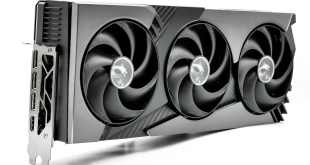HQV Benchmark 2.0 is an updated version of the original tool and it consists of various video clips and test patterns which are designed to evaluate motion correction, de-interlacing, decoding, noise reduction, detail enhancement and film cadence detection.
There are two versions of the program, standard definition on DVD and high definition on BluRay. As our audience will be concentrating on HD content, so will we.
This has a total of 39 video tests which is increased from 23 in the original and the scoring is also up from a total of 130 to 210. As hardware and software gets more complicated, the software has been tuned to make sure we can thoroughly maximise our analysis.
Read our initial analysis over here.
| ASRock E350M1 | |
|
Dial
|
4 |
| Dial with static pattern | 5 |
| Gray Bars | 5 |
| Violin | 5 |
| Stadium 2:2 | 5 |
| Stadium 3:2 | 5 |
| Horizontal Text Scroll | 5 |
| Vertical Text Scroll | 5 |
| Transition to 3:2 Lock | 5 |
| Transition to 2:2 Lock | 0 |
|
2:2:2:4 24 FPS DVCAM Video
|
5 |
|
2:3:3:2 24 FPS DVCam Video
|
5 |
|
3:2:3:2:2 24 FOS Vari-Speed
|
5 |
|
5:5 FPS Animation
|
5 |
|
6:4 12 FPS Animation
|
5 |
|
8:7 8 FPS Animation
|
5 |
|
Interlace Chroma Problem (ICP)
|
5 |
|
Chroma Upsampling Error (CUE)
|
5 |
|
Random Noise: Sailboat
|
5 |
|
Random Noise: Flower
|
5 |
|
Random Noise: Sunrise
|
5 |
|
Random Noise: Harbour Night
|
5 |
|
Scrolling Text
|
3 |
|
Roller Coaster
|
3 |
|
Ferris Wheel
|
3 |
|
Bridge Traffic
|
3 |
|
Text Pattern/ Scrolling Text
|
3 |
|
Roller Coaster
|
3 |
|
Ferris Wheel
|
5 |
|
Bridge Traffic
|
5 |
|
Luminance Frequency Bands
|
5 |
|
Chrominance Frequency Bands
|
5 |
| Vanishing Text | 5 |
|
Resolution Enhancement
|
15 |
|
Theme Park
|
5 |
| Driftwood | 2 |
|
Ferris Wheel
|
3 |
|
Skin Tones
|
7 |
| Total | 179 |
This ASRock Fusion system delivers high quality video that’s a measurable 60% better than the scores we got with Intel’s HD video engine when we tested it, back in June last year.
 KitGuru KitGuru.net – Tech News | Hardware News | Hardware Reviews | IOS | Mobile | Gaming | Graphics Cards
KitGuru KitGuru.net – Tech News | Hardware News | Hardware Reviews | IOS | Mobile | Gaming | Graphics Cards



I honestly feel this is the best of them all, because of the price. I also dont think many media users will care about USB 3, so I always thought it was a weird inclusion in the first place.
No frills, but the price is great. ive found it for £70 in the UK, which is half the price of the asus board. Quite a saving, even if it isnt as nice.
Where did you find it for that price? I cant even find Uk stock at all.
Impossible to get fusion products over here. sucks.
hits a good price point, but the asus board has me spoilt for choice, looks so much better with a lot more options.
the passively cooled boards appeal to me more than these ones. those little fans are a failure waiting to happen
The system configuration mentioned at the end uses SO-DIMM memory, even though the review says the Asrock uses normal DIMMs. And why use a 2.5″ disk when the case supports 3.5″?
The SO-Dimm listed once was a typo. its regular memory used. fixed that.
The 2.5 inch drive was used because it was handy at the time, the case certainly supports both yes, so either could be used. Some people building this system might be using a smaller chassis and a 2.5 inch drive would be viable, perhaps even an SSD for quicker boot times. I think a lot of people might have spare 2.5 inch laying around. or perhaps its just me !